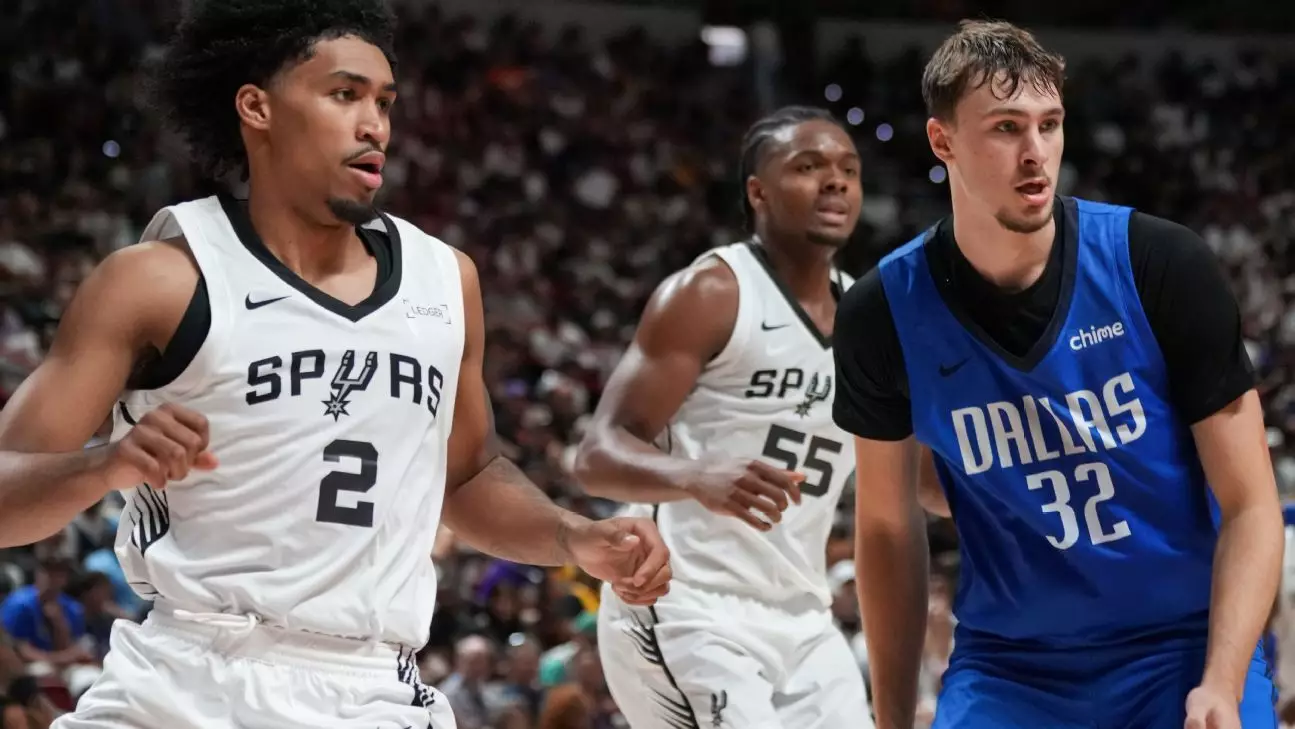The encounter between the top picks of the 2025 NBA draft – Cooper Flagg and Dylan Harper – at the summer league was more than just a game; it served as a microcosm of expectations, hopes, and the unpredictable nature of athletic development. While the spectacle was undoubtedly captivating, it also laid bare the complex realities that lie beneath the surface of rising prospects. These young players symbolize not only the potential for greatness but the inherent uncertainties that come with early evaluations and the often idealistic projection of future superstar status.
The game’s environment was electric, a blend of high-level talent and eager spectators eager to glimpse the stars of tomorrow. Flagg’s dominant 31-point performance, punctuated by highlight-reel dunks and aggressive free-throw shooting, underscored his maturity and readiness to impact the game. Similarly, Harper’s triumphant return from injury and a 16-point outing highlighted his resilience and the promise that keeps fans and analysts buzzing. Yet, beneath this excitement, it’s worth questioning whether these individual flashes are truly indicative of future NBA dominance or if they are fleeting moments in a longer journey of development fraught with challenges.
As with any early-stage talent, the reality remains that summer league performance is only a fragment of what an NBA career entails. Teams and fans should be cautious about allowing these performances to overly inflate expectations, especially when faced with the ever-present threat of stagnation, injury, or mental pressure. The narrative of these prospects needs to be grounded in patience, realism, and a willingness to accept that early success does not automatically translate to sustained excellence.
The Mirage of Bright Lights and Overhyped Expectations
The spectacle around Flagg and Harper’s performances painted an overly optimistic picture of their futures—a common trap in the hyper-commercialized environment of today’s sports culture. The game was set in a high-profile arena with celebrity spectators, amplifying the narrative that these players are already on the cusp of stardom. While this adds an exciting layer for fans and media alike, it also risks shaping perceptions that may not account for the systemic challenges young players face as they transition from summer league to regular NBA seasons.
Flagg’s varied performance — occasionally struggling against defensive pressure yet finding ways to draw fouls — exemplifies the inconsistency that often accompanies young talent before they refine their skills. Harper’s impactful moments, such as a spectacular block and a crucial floater, highlight his athletic prowess. Still, these isolated cases should be viewed as signs of potential rather than guarantees of future greatness. Critics must recognize that basketball at the NBA level is a complex convergence of physicality, mental toughness, adaptability, and teamwork. Early highlights, while inspiring, are often superficial indicators of holistic readiness.
Furthermore, the game’s portrayal subtly enforces an almost mythic status around these prospects, which can hinder a balanced understanding of their actual development paths. The media’s focus on individual achievements can sometimes overshadow the importance of team dynamics and the long road ahead. In this context, it’s vital to remember that the road to NBA stardom is paved with setbacks, the necessity of incremental growth, and the patience required from both players and followers.
The Double-Edged Sword of Early Success and the Weight of Expectations
While the summer league game displayed flashes of brilliance, it also spotlighted the weight of expectations placed on these young shoulders. Flagg’s aggressive play at the foul line and Harper’s all-around impact were commendable, but they also serve as a reminder that early accomplishments can carry a paradoxical burden. The pressure to perform consistently, to justify draft positioning, and to meet the media’s rising star narrative can be overwhelming.
This emphasis on immediate impact risks overshadowing the foundational aspects of player development—subtle improvements, the acquisition of basketball IQ, and mental resilience. Athletes often need time and coaching to translate summer league exploits into tangible contributions in regular-season games. The “overnight success” myth is especially harmful because it discounts the years of hard work, the mentorship, and the behind-the-scenes struggle required to reach NBA standards.
From a center-left liberal perspective, fostering an environment that emphasizes patience, mental health, and player well-being is essential. The sport’s culture must evolve to recognize that not every highly-touted prospect will bloom instantly. Adequate support systems—mental health resources, balanced expectations, and a focus on holistic development—are crucial for cultivating not just skilled athletes but resilient individuals capable of sustaining long-term success.
In closing, the NBA’s fascination with youthful promise must be balanced with a pragmatic understanding of growth. The game at the summer league level is an important indicator, but it is only the tip of the iceberg. Behind every highlight is a player navigating a demanding landscape of personal effort, systemic support, and societal expectations that can make or break their journey to NBA stardom. Only a nuanced, patient approach can ensure that the sport’s brightest talents Shine sustainably rather than burnout prematurely under the weight of unrealistic hopes.

